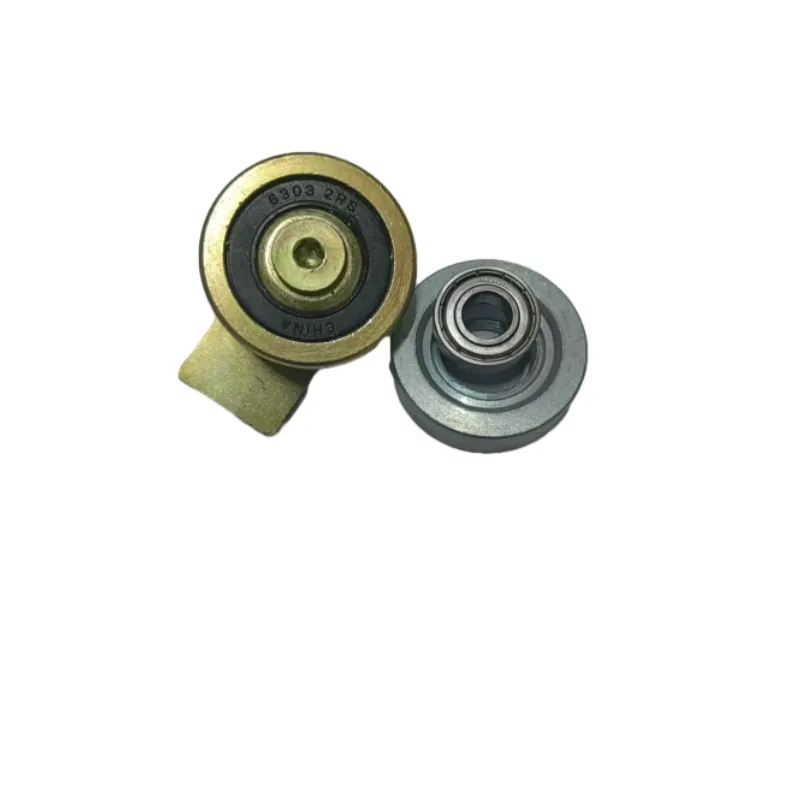
нов . 24, 2024 07:22 Back to list
Understanding Tolerances for Deep Groove Ball Bearings in Precision Engineering Applications
Understanding Deep Groove Ball Bearing Tolerances
Deep groove ball bearings are among the most commonly used types of rolling bearings. Their versatility and ability to accommodate radial and axial loads make them suitable for a wide range of applications. However, to ensure optimal performance, it is crucial to understand the tolerances associated with these bearings. This article delves into the concept of tolerances in deep groove ball bearings, exploring their significance, types, and how they impact performance.
What Are Tolerances?
In mechanical engineering, tolerances refer to the permissible limits of variation in a physical dimension. They are critical in ensuring that components fit together correctly and function as intended. For deep groove ball bearings, tolerances determine the allowable deviations in dimensions such as inner and outer diameter, width, and the ball diameter. These tolerances are essential to ensure that the bearings operate smoothly, minimize friction, and enhance longevity.
Importance of Tolerances in Deep Groove Ball Bearings
The tolerance levels for deep groove ball bearings are fundamental for several reasons
1. Performance Consistency Accurate tolerances ensure that the bearings perform consistently across various operating conditions. Low tolerance variations lead to better load distribution, reducing the risk of premature wear or failure.
2. Friction and Temperature Control Proper tolerances can significantly influence the levels of friction and heat generated during operation. Irregularities in dimensions can lead to increased friction, which can elevate temperatures and ultimately compromise the bearing's lifespan.
3. Alignment and Mounting Bearings must be correctly aligned and mounted within their housing. Tolerances help to achieve the necessary clearances and fits, ensuring that the bearings can operate without encountering misalignment issues, which can cause excessive wear.
4. Interchangeability Standardized tolerances make it easier to interchange bearings from different manufacturers without compromising quality or performance. This interchangeability is especially important in maintenance and repair scenarios.
deep groove ball bearing tolerances

Types of Tolerances
Tolerances for deep groove ball bearings are classified into different categories, including
1. Dimensional Tolerances These refer to the allowable variation in the bearings’ dimensions, such as the outer diameter (OD), inner diameter (ID), and thickness. The dimensional tolerances can affect the fit of the bearing with the shaft and housing.
2. Geometric Tolerances This type encompasses aspects such as roundness, alignment, and surface finish. Geometric tolerances ensure that the bearing’s raceways are properly formed and aligned, minimizing stress concentration points that could lead to failure.
3. Radial and Axial Play Tolerances also define the amount of radial and axial play allowed in a bearing assembly. This is essential for accommodating thermal expansion and preventing binding during operation.
4. Material Tolerances Variations in the material properties of bearing components, such as hardness and elasticity, can also affect overall tolerances. Manufacturers specify these tolerances to ensure that the materials used will perform reliably under expected loads.
Industry Standards
Several standards organizations, including the International Organization for Standardization (ISO) and the American National Standards Institute (ANSI), provide guidelines and specifications for bearing tolerances. These standards help ensure uniformity across manufacturers, allowing for the global interchangeability of components and supporting streamlined manufacturing processes.
Conclusion
Understanding the tolerances associated with deep groove ball bearings is crucial for maximizing their performance and lifespan. By adhering to established tolerance standards, manufacturers can produce reliable, high-quality bearings that meet the demands of various applications. Engineers and designers must consider these tolerances during the design and selection process to ensure optimal functionality, reduce maintenance needs, and prevent equipment failures. In the end, the right tolerances contribute to the efficient operation of machinery and equipment, reinforcing the importance of meticulous attention to detail in bearings engineering.
Latest news
-
Common Failures in Thrust Ball Bearings and Solutions
NewsAug.22,2025
-
How Tapered Roller Bearings Can Take Shock Loads
NewsAug.22,2025
-
Angular Bearings in High-Precision Spindles
NewsAug.22,2025
-
The Impact of Misalignment on Cylindrical Roller Bearing Performance
NewsAug.22,2025
-
The Role of Cage Design in Deep Groove Ball Bearing Durability
NewsAug.22,2025
-
The Impact of Material Quality on Machinery Bearings’ Lifespan
NewsAug.22,2025
